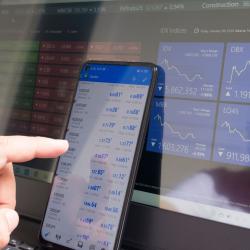How CFD Trading can help you Develop a Winning Strategy
Have you been wondering how to get ahead in financial trading? One popular option for traders of all levels is Contracts for Difference (CFD) trading, which offers many advantages over other types of trading. CFDs are derivative instruments that allows users to take advantage of fluctuations in asset prices, such as shares, commodities, indices, or currencies, without actually owning them.
With CFDs, even small changes in market trends can yield significant returns and losses depending on your strategy – so understanding and carefully managing risk is vital. Keep reading this article to learn about the basics and best practices for successful CFD trading strategies and how they can help you develop a winning edge.
Introducing the Basics of CFD Trading
CFD trading, or Contract for Difference trading, has become increasingly popular recently. This type of trading is based on the difference in an asset's entry and exit price, allowing traders to find opportunities from rising and falling markets. CFD trading involves individuals or entities trading on margin, meaning that they only have to put down a portion of the total value of a trade. It allows traders to magnify their potential returns and increases the risk of losses.
Traders must thoroughly understand the basics of CFD trading, including the mechanics of the trade, the risks involved, and the different strategies that can be employed. By grasping these fundamental concepts and developing a solid trading plan, individuals can begin their journey into the exciting world of CFD trading. A free ADSS CFD trading guide is an excellent resource for traders to get started and understand the basics of CFD trading.
Understand the Different Types of CFD Trades
One of the most important considerations when trading CFDs is the type of trade you are entering into. Understanding the types of trades available can help you identify which ones best suit your trading strategy and goals.
The two main types of CFD trades are long-term vs short-term and leverage vs non-leverage. A long-term trade is based on a longer time frame, usually several weeks or months, while a short-term trade takes place over fewer days or hours. Leverage trading involves borrowing funds from your broker to increase potential gains (or losses), while non-leverage trading does not involve any borrowed funds.
Identifying Key Trends in the Market
Another critical aspect of a successful CFD trading strategy is accurately identifying market trends. Recognising and capitalising on emerging trends can help you stay ahead of the game and increase your potential returns.
To effectively identify market trends, traders should analyse relevant data like economic indicators, news events, company earnings reports, etc. Additionally, traders should use technical analysis tools such as trend lines, moving averages, and price action patterns to predict future price movements. By combining fundamental research with careful technical analysis, traders can develop effective strategies to capitalise on emerging market trends.
Developing a Winning Trading Strategy
Once you understand the basics of CFD trading and have identified key trends in the market, it is time to develop your winning trading strategy. A successful CFD trading plan should include risk management measures such as stop losses, limit orders, and position sizing. Additionally, traders should research different strategies, such as trend following and momentum trading, to determine which works best for their goals.
Lastly, traders must practise disciplined money management by not over-leveraging their positions and only investing what they can afford to lose. By combining all these factors into a well-developed trading plan, individuals can significantly increase their chances of success in CFD trading.
Practising Risk Management to Minimise Losses
Any successful trading strategy should include risk management measures to minimise losses. Risk management is vital to CFD trading as it helps you protect your capital and maximise potential returns. One of the most effective methods for managing risk is stop loss orders, which automatically close out positions when they reach predetermined levels – helping traders avoid significant losses.
Additionally, traders should always employ leverage responsibly by only investing what they can afford to lose and avoiding over-leveraging their positions. By effectively managing risk, individuals can significantly reduce their chances of incurring substantial losses while still having the potential to take advantageof CFD trading.
Utilising Tools and Resources for Successful Trading
Finally, traders should use the many tools and resources available to increase their chances of success in CFD trading. Numerous online platforms offer educational material and real-time market analysis to help traders stay current on the latest news and price movements. Additionally, there are a variety of CFD trading software packages that can help individuals quickly identify opportunities and manage positions.
By taking advantage of these tools and resources and applying a sound strategy based on thorough research, individuals can significantly increase their chances of developing a winning edge in the world of CFD trading.
More to Read:
Previous Posts:


